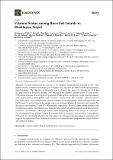| dc.contributor.author | Ulak, Manjeswori | |
| dc.contributor.author | Chandyo, Ram | |
| dc.contributor.author | Thorne-Lyman, Andrew Lucian | |
| dc.contributor.author | Henjum, Sigrun | |
| dc.contributor.author | Ueland, Per | |
| dc.contributor.author | Midttun, Øivind | |
| dc.contributor.author | Shrestha, Prakash | |
| dc.contributor.author | Fawzi, Wafaie W. | |
| dc.contributor.author | Graybill, Lauren Aiko | |
| dc.contributor.author | Strand, Tor | |
| dc.date.accessioned | 2016-04-26T18:06:20Z | |
| dc.date.issued | 2016 | |
| dc.identifier.citation | Ulak, Manjeswori, Ram Chandyo, Andrew Thorne-Lyman, Sigrun Henjum, Per Ueland, Øivind Midttun, Prakash Shrestha, Wafaie Fawzi, Lauren Graybill, and Tor Strand. 2016. “Vitamin Status Among Breastfed Infants in Bhaktapur, Nepal.” Nutrients 8 (3) (March 8): 149. doi:10.3390/nu8030149. | en_US |
| dc.identifier.issn | 2072-6643 | en_US |
| dc.identifier.uri | http://nrs.harvard.edu/urn-3:HUL.InstRepos:26835961 | |
| dc.description.abstract | Vitamin deficiencies are known to be common among infants residing in low- and middle-income countries but relatively few studies have assessed several biochemical parameters simultaneously. The objective of the study was to describe the status of vitamins (A, D, E, B₆, B12 and folate) in breastfed infants. We measured the plasma concentrations of trans retinol, 25 hydroxy vitamin D, α-tocopherol, pyridoxal 5'-phosphate, cobalamin, folate, methylmalonic acid, homocysteine, hemoglobin and C-reactive protein from 467 randomly selected infants. One in five (22%) was deficient in at least one vitamin. Mean (SD) plasma folate concentration was 73 (35) nmol/L, and no infant in the sample was folate deficient. Vitamin B₆ deficiency and vitamin B12 deficiency was found in 22% and 17% of the infants, respectively. Elevated plasma methylmalonic acid or total homocysteine concentration was found in 82% and 62% of infants, respectively. Fifteen percent of infants were vitamin A deficient and 65% were marginally deficient in vitamin A. Fewer than 5% of infants had low plasma vitamin D concentration or vitamin E concentration (α-tocopherol <9.3 µmol/L). Our results illustrate the importance of continued supplementation campaigns and support the expansion of food fortification and dietary diversification programs that target children and women in Nepal. | en_US |
| dc.language.iso | en_US | en_US |
| dc.publisher | MDPI AG | en_US |
| dc.relation.isversionof | doi:10.3390/nu8030149 | en_US |
| dc.relation.hasversion | http://www.ncbi.nlm.nih.gov/pmc/articles/PMC4808878/ | en_US |
| dash.license | LAA | |
| dc.subject | Nepal | en_US |
| dc.subject | homocysteine | en_US |
| dc.subject | infant | en_US |
| dc.subject | methylmalonic acid | en_US |
| dc.subject | vitamins | en_US |
| dc.title | Vitamin Status among Breastfed Infants in Bhaktapur, Nepal | en_US |
| dc.type | Journal Article | en_US |
| dc.description.version | Version of Record | en_US |
| dc.relation.journal | Nutrients | en_US |
| dash.depositing.author | Fawzi, Wafaie W. | |
| dc.date.available | 2016-04-26T18:06:20Z | |
| dc.identifier.doi | 10.3390/nu8030149 | * |
| dash.contributor.affiliated | Graybill, Lauren Aiko | |
| dash.contributor.affiliated | Thorne-Lyman, Andrew Lucian | |
| dash.contributor.affiliated | Fawzi, Wafaie | |


